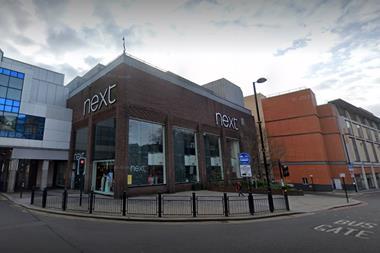It is not every day that 5m sq ft of shop space with permission to sell food comes on to the market, so it is easy to understand why the potential sale of BHS has got tongues wagging .

Sir Philip Green’s decision to consider offers for the department store chain feels like a pivotal moment for the retail industry.
Not only is the sale of so much UK shop space in one go rare, but so are disposals by Sir Philip. The tycoon has owned BHS for almost 15 years and until last weekend he had steadfastly denied in public and private that he would sell. He has clearly received some attractive offers.
There are mutterings that because BHS is losing money and has a hefty pension deficit, interest in the retailer will be limited. Clearly, as Sir Philip has found, there is a lot to do to get BHS working across all its stores, many of which are located in secondary towns and
high streets.
However, the brand name, the quality of some of the store locations and planning permission to sell food in 150 shops make it a powerful asset.
Sir Philip publicly committed to keep BHS running as a going concern when he bought the department store chain and will be careful to protect his reputation, so an immediate break-up of the retailer remains unlikely.
However, ultimately, the stores are likely to go their separate ways. Supermarkets, discounters and department stores are targeting the key sites. Property agents are already trying to match up high-profile international department stores with BHS’s prime Oxford Street site, with Galeries Lafayette of France and La Rinascente from Italy mentioned.
For the supermarkets, the potential sale comes when they are battling falling sales and pledging to rein in capital expenditure. A couple of years ago, the “big four” — Tesco, Asda, J Sainsbury’s and Morrisons — would have been scrapping for the key sites. Today, only Asda, with its booming George clothing business, under-exposure to convenience stores and financial backing from Walmart, looks to be in the mix.
The pressure on the supermarkets — which led to the exit of Morrisons boss Dalton Philips — and the sale of BHS look like being the headline results of what was a tumultuous festive period for retailers. It was a season where the emerging shopping trends exploded into life and exposed the retailers who are not in shape for the era of online retailing. The losers — the supermarkets, Marks & Spencer — were characterised by having too many stores and not possessing the infrastructure to deal with unpredictable surges in online orders. The winners — Dixons, House of Fraser and John Lewis — had already reshaped their businesses to deal with the new world.
The period was dominated by Black Friday, which sparked a week of record sales for many retailers, and click & collect. Sebastian James, chief executive of Dixons Carphone, said the Christmas shopping period has been transformed by Black Friday from a “dromedary camel” with one hump to a “Bactrian camel” with two. This was a reference to the peak in sales that retailers enjoy before Christmas being split between Black Friday and the late surge in high street and online shopping in the days before Christmas.
Meanwhile, John Lewis crossed the 50% mark for click-&-collect orders in the Christmas period, meaning more than half of its online orders are now collected from stores. For Andy Street, the boss of John Lewis, this was evidence that the retailer’s strategy is working and that the high street still has a future.
This is the environment into which BHS is being sold. It may be losing money and it may have a pension deficit, but a buyer could still shake-up the 21st century retail sector with its stores.
Graham Ruddick is retail correspondent for the Daily Telegraph and Sunday Telegraph






























No comments yet